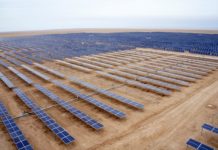The EBRD has launched the first-ever dedicated climate resilience bond, raising US$ 700m with the issuance.
BNP Paribas, Goldman Sachs, and Skandinaviska Enskilda Banken AB acted as joint bookrunners, which saw demand from approximately 40 investors in 15 countries.
The proceeds from the five-year bond will be used to finance the Bank’s existing and new climate resilience projects. These will typically fall under
- Climate resilient infrastructure (e.g. water, energy, transport, communications and urban infrastructure)
- Climate-resilient business and commercial operations; or
- Climate-resilient agriculture and ecological systems.
The EBRD has already classified a portfolio of some €7bn climate resilient projects. Examples include the Qairokkum hydropower upgrade in Tajikistan and the Saiss water conservation project in Morocco.
The EBRD’s Climate Resilience Bond will be issued in conformity with the four core principles of the Green Bond Principles, while the projects earmarked for the Use of Proceeds are selected and managed in alignment with the Climate Resilience Principles, published on 17 September 2019 by the Climate Bonds Initiative (CBI).
This weekend in New York, the United Nations Climate Action Summit will see renewed calls for financial innovation to build climate resilience, as recently outlined by the United Nations Environment Programme Finance Initiative and the Global Centre on Adaptation.
“This is a major step forward in the development of capital market instruments that can crowd in private finance at scale for climate resilience,” said Craig Davies, Head of Climate Resilience Investments at the EBRD.















